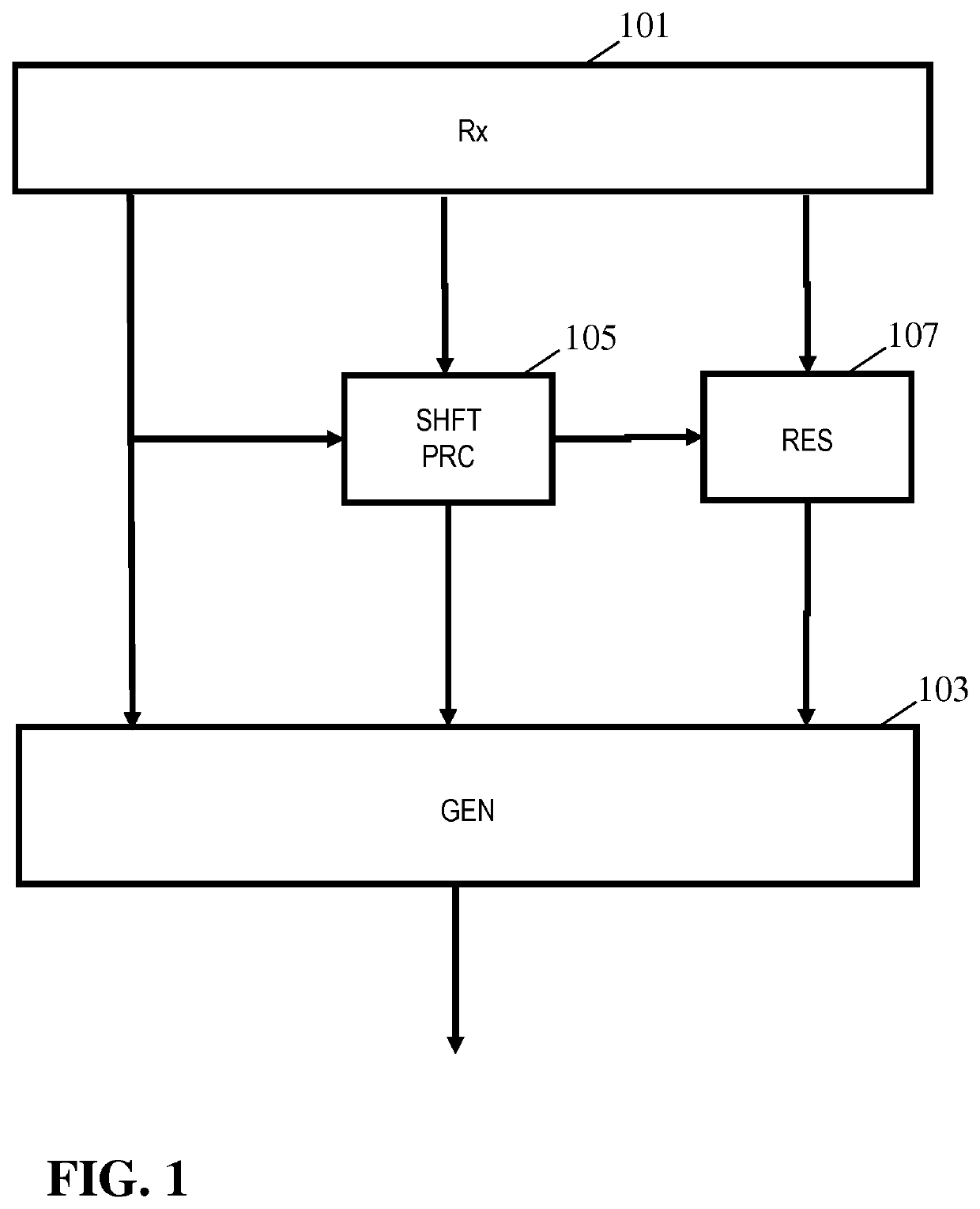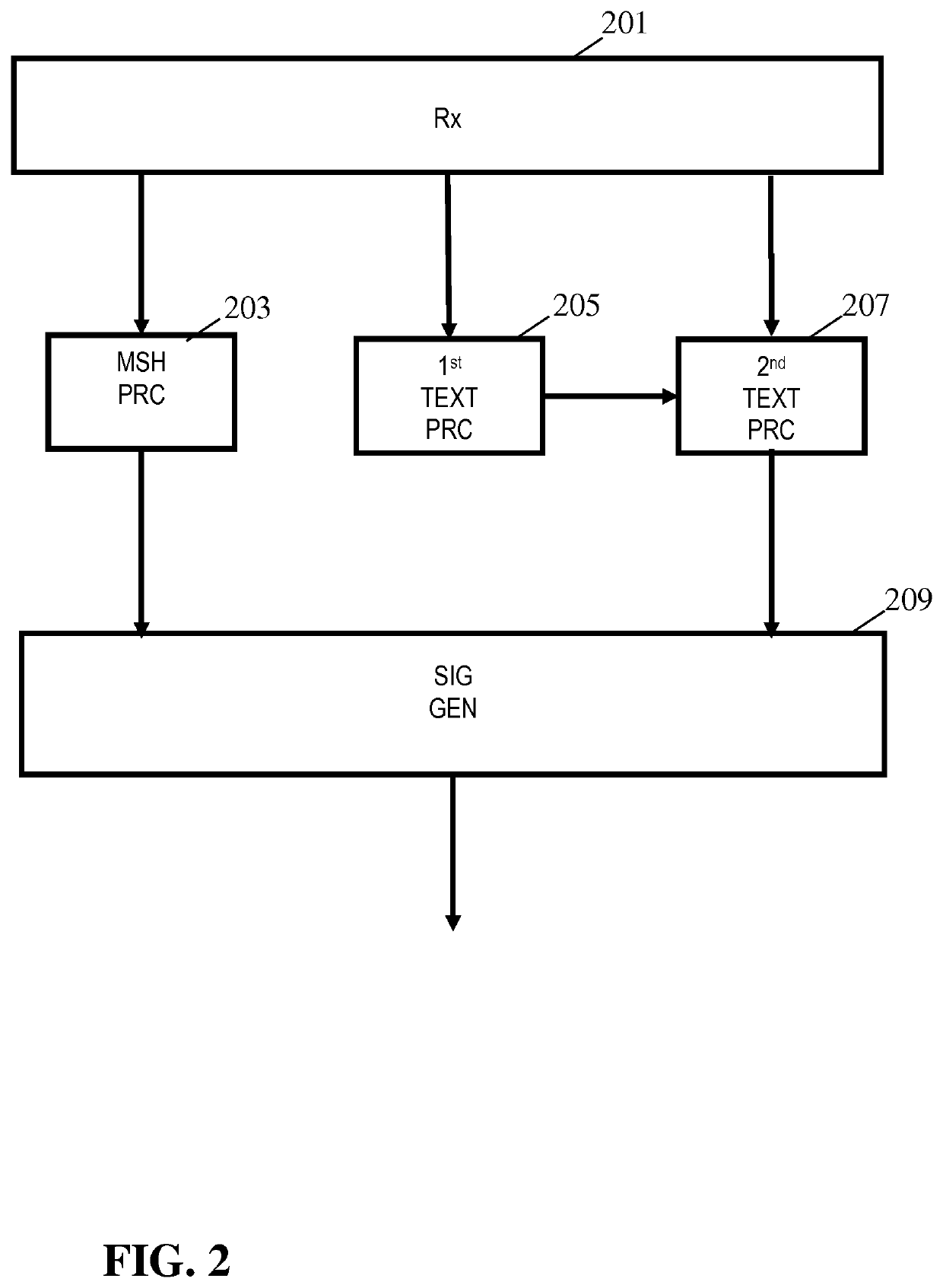Processing of 3D image information based on texture maps and meshes
a technology of texture maps and image information, applied in the field of representation of three dimensional image data/information using texture maps and meshes, can solve the problems of reducing the number of triangles, reducing the spatial resolution of the mesh, and being less easy to achieve other embodiments, so as to improve the quality of data rate, improve the distribution of three dimensional image information, and improve the effect of encoding
- Summary
- Abstract
- Description
- Claims
- Application Information
AI Technical Summary
Benefits of technology
Problems solved by technology
Method used
Image
Examples
Embodiment Construction
[0074]FIG. 1 illustrates an example of an apparatus for generating a 3D image signal. The apparatus, and indeed the generated image signal, is based on representing 3D information by a texture map and associated depth map. The apparatus may specifically be part of a virtual reality server which may provide an image signal with 3D information for a scene. A (typically remote) virtual reality client may access the virtual reality server and in response be provided with the image signal from which it may locally generate suitable images of the scene to provide the virtual reality experience. Specifically, the virtual reality client device may typically be arranged to generate images for a given desired viewpoint based on the information received from the virtual reality server. Thus, the apparatus of FIG. 1 will henceforth be referred to as the encoder, and specifically as the encoder of a virtual reality server, but it will be appreciated that this is not intended to imply a limitatio...
PUM
 Login to View More
Login to View More Abstract
Description
Claims
Application Information
 Login to View More
Login to View More - R&D
- Intellectual Property
- Life Sciences
- Materials
- Tech Scout
- Unparalleled Data Quality
- Higher Quality Content
- 60% Fewer Hallucinations
Browse by: Latest US Patents, China's latest patents, Technical Efficacy Thesaurus, Application Domain, Technology Topic, Popular Technical Reports.
© 2025 PatSnap. All rights reserved.Legal|Privacy policy|Modern Slavery Act Transparency Statement|Sitemap|About US| Contact US: help@patsnap.com



